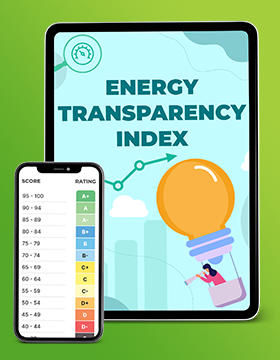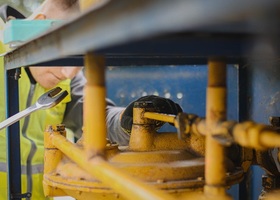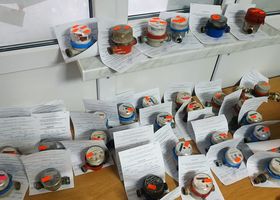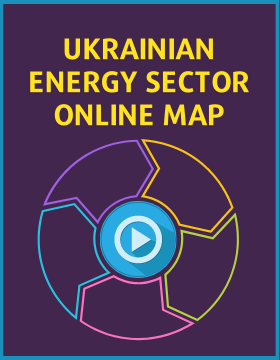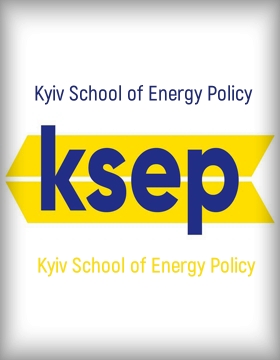Green kerosene. How to travel without harming the environment
Innovations companies are implementing to reduce carbon emissions in the air transport industry

Climate change and environmental protection have become key topics at the World Economic Forum (WEF) in Davos, which is taking place this week. The event, which brings together leaders from different countries, has also not gone unnoticed by environmental activists.
They are outraged that politicians and big business are not doing enough to stop global warming. Moreover, numerous wealthy WEF participants continue to exacerbate climate problems by using helicopters and airplanes powered by fossil fuels for travel instead of “clean” sources, which were first used in aviation almost two decades ago, in the summer of 2008.
Ukrainian Energy has found out what innovations the business is implementing to decarbonize air transportation and what are the prospects for their distribution on the market.
Fuel innovations
The first startup has appeared in Germany, which is developing a technology for producing aviation kerosene from biogas. This innovative product for the fuel market is called “green kerosene” and will allow for climate-neutral flights.
The company Caphenia, based in the Bavarian town of Bernau am Chiemsee, uses a process that differs from the known technologies for converting biogas into aviation kerosene. It is based on a large reactor that must withstand temperatures of up to +1,500 °C.
A feature of the process is the efficient use of energy. “At the end of production, the product is cooled from 900 to 230 °C in one second. The energy released in the process is not wasted, but is used to heat the substances during the manufacture of the next batch. As a result, we achieve an efficiency of 86%, while traditional methods do not exceed 45%,” explained Mark Misselhorn, founder of Caphenia, in a comment for the German-language publication AgrarHeute.
He believes that not only in Germany, but also worldwide, there is more than enough biomass to produce the “green kerosene” needed to decarbonize aviation and shipping.
“I see huge potential. My technology allows for the production of more than 500 million tons of renewable fuel. This is enough to supply the entire transport industry,” said Marc Misselhorn. He expects to be able to establish large-scale industrial production of “green kerosene” by 2028 and expand his business abroad.
Incentives for aviation
The main incentive for replacing fossil fuels with renewable sources in the EU air transport sector was the “European Green Deal”, which provides for the complete decarbonization of the economy by 2050. In addition, the European Parliament reached agreements on the decarbonization of the aviation sector and “creating a level playing field for sustainable air transport” within the framework of the ReFuelEU Aviation initiative.
That is why, for example, the Scandinavian airline SAS has announced plans to switch all its domestic flights to biofuel by 2030.
And in order to reduce carbon emissions, the British Easy Jet is developing electric aircraft in collaboration with the start-up Wright Electric, which will be able to cover short distances and carry passengers, for example, from London to Paris or Amsterdam.
Rotterdam project
At the Rotterdam The Hague Innovation Airport, a consortium of companies has begun commercial testing of a new jet fuel for aircraft. “We want to fundamentally change aviation. That is why we want to put into operation a synthetic fuel made from carbon dioxide (CO2) extracted from the air,” says Willem van Genugten, director of the Dutch company Urban Crossovers, which is part of the consortium.
So far, only a small amount of such fuel has been able to be synthesized in the laboratory. The Rotterdam project’s ambitious goal is to reach commercial scale and set up production at a special factory built near the airport, which will be powered by solar panels.
The expected production volume is 1,000 liters of CO2 jet fuel per day. But Oscar Meyerink, CEO of SkyNRG (also part of the Rotterdam consortium), admits that the new type of fuel from captured carbon will have a long way to go to become competitive in the market. The main obstacle to its mass production is cost. “There is a relatively cheap fossil jet fuel. Capturing CO2 from the air is still an innovative technology, and therefore it is quite expensive,” the businessman notes.
The Swiss company Climeworks will supply the CO2 for the Rotterdam project. It has already built three large carbon capture and storage plants - in Switzerland, Iceland, Italy, and has begun implementing a new project in the United States.
How carbon is captured from the air
The fan-driven systems used by Climeworks suck carbon from the atmosphere and pass it through a filter.
When the filter is filled with CO2, it is heated (using mainly geothermal energy) to about 100 °C. After that, the carbon is mixed with hydrogen and forms a compressed gas that can be used to produce fuel or stored in solid form underground in the form of minerals.
The appeal of the technology is that the air purified from CO2 is sent back into the atmosphere. And the process is repeated - the filters are used repeatedly, several thousand cycles. In a broader sense, it is about cleaning the planet's air of excess carbon.
One of the most promising companies working on the technology of "direct air capture" is the Canadian Carbon Engineering, founded in 2009. It attracted the attention and investment of philanthropist Bill Gates, as well as American oil and gas corporations Chevron and Occidental Petroleum.
The company's first plant began extracting carbon from the air in 2015, and since 2017 - converting it into synthetic fuel and gasoline. Carbon dioxide can also be supplied through pipelines to industrial enterprises, for example, for the production of metal and concrete, the manufacture of synthetic coatings or carbon fiber.
Skeptical activists
Representatives of certain environmental organizations are skeptical about the successful decarbonization of the aviation industry. They do not believe that new technologies will reduce carbon emissions.
In particular, in the context of the Rotterdam project, activists point to the limited volume of production: the planned 1,000 liters of “green kerosene” per day is equivalent to only 5 minutes of Boeing 747 flight. Secondly, the direct CO2 capture station is planned to be powered by renewable energy sources so that the entire system has a neutral level of carbon emissions.
Environmental activist Joring de Lege from the organization “Friends of the Earth” doubts that there will be enough electricity to implement such a project on a large scale.
“There simply isn’t enough space on the planet to put wind or solar generators to produce enough renewable electricity to meet all the demand,” she says. The activist welcomes any innovation that focuses on climate and environmental protection, but believes that the only surefire way to reduce emissions is to reduce the number of flights.
Market expectations
The first ever flight using biofuels took place in 2008.
It was a flight from London to Amsterdam, organized by Boeing and Virgin. In the fall of 2023, they also made the first transatlantic flight from London to New York using exclusively “green” aviation fuel.
Joris Melkert, a senior lecturer in the aerospace industry at Delft University of Technology in the Netherlands, is confident that alternative fuels will be able to completely replace traditional ones, but “it is very difficult to determine the timeframe for when this will happen.”
The head of the Bioenergy Association of Ukraine, Heorhiy Geletukha, associates the best commercial prospects in the decarbonization of air transport with biogas, which is used as a basis for the production of sustainable aviation fuel (SAF). “We bring biogas to the quality of biomethane, and then, using chemical reactions at certain temperatures, we create a liquid from it, which is very similar to aviation kerosene and meets all EU requirements for sustainable fuel,” the expert explained in an interview with Ukrainian Energy.
Although “green biogas” obtained from biomethane will be more expensive than traditional fossil fuels, companies will be able to gain certain advantages from the use of alternative technologies. “This is not only a business contribution to solving climate problems, but also an opportunity to monetize carbon emission reductions, for example, through financial and stock exchange instruments,” says Heorhiy Geletukha.
Joris Melkert believes that alternative fuels will become significantly more competitive if the costs of environmental protection measures are included in the cost of the flight. And this, as a result, will lead to an increase in air ticket prices. Therefore, the Dutch expert is inclined to believe that the future of alternative fuels in aviation depends, first of all, on social pressure on airlines from governments and citizens. But “technical obstacles are no longer there, despite the fact that making an airplane environmentally friendly is much more difficult than making a car.”
Svitlana Dolinchuk, specially for “Ukrainian Energy”

